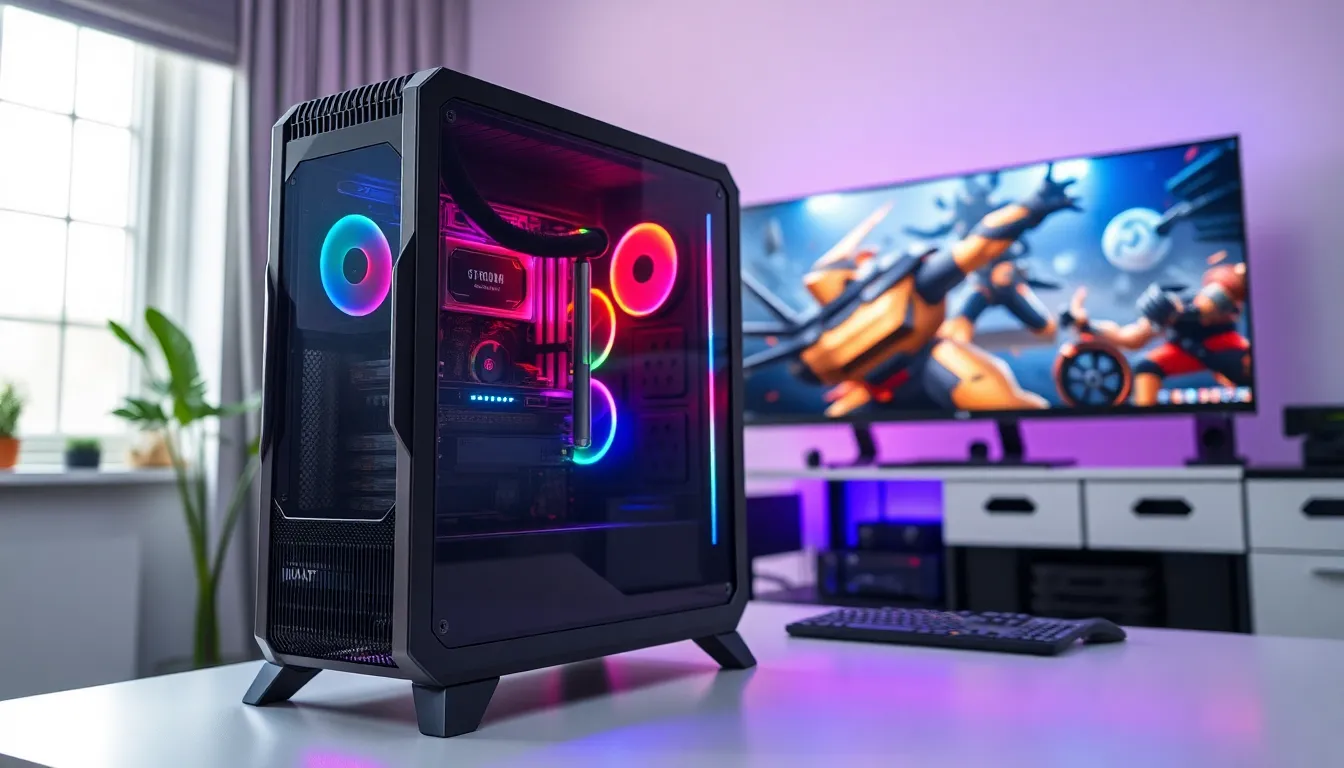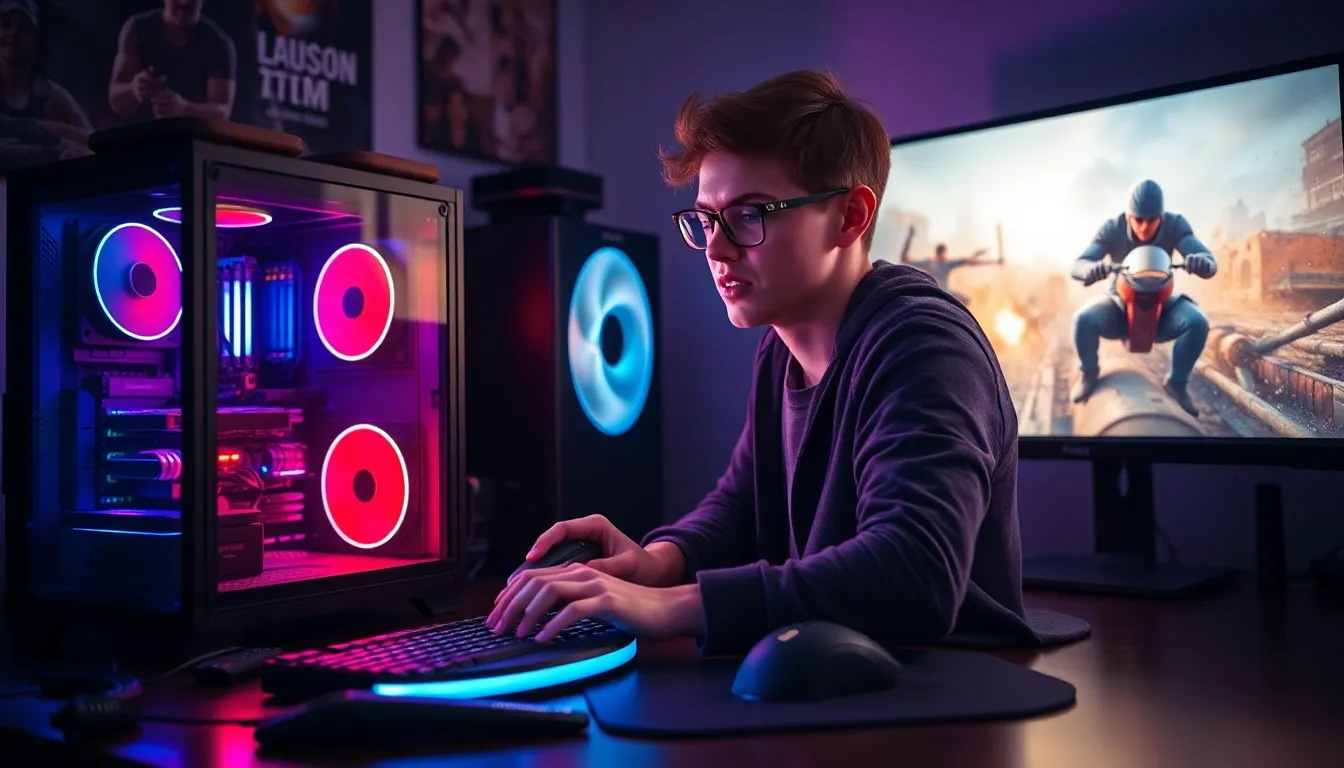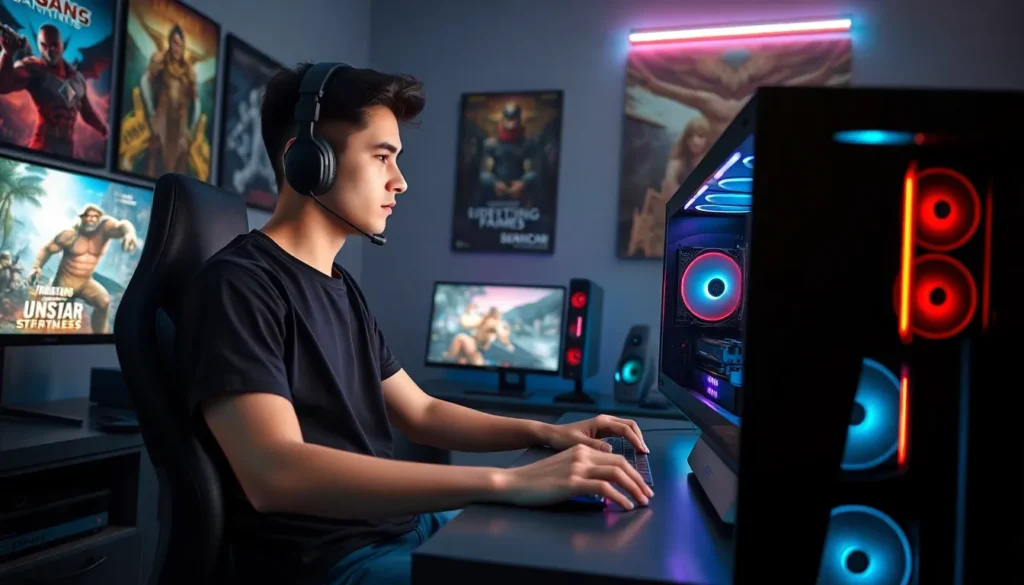When it comes to gaming PCs, power consumption can feel like a game of hide and seek. You might think you’re just battling virtual foes, but your rig’s appetite for electricity can sneak up on you. Curious about how much juice your gaming setup really guzzles? You’re not alone. Gamers everywhere are trying to balance performance with their electric bills, and it’s a quest worth exploring.
Understanding power usage isn’t just about saving a few bucks; it’s about optimizing your gaming experience. After all, nobody wants to be the hero who accidentally lights up their neighborhood with their gaming rig. So grab your controller and let’s dive into the electrifying world of PC power consumption. You might just find that managing your energy use can be as satisfying as scoring the final kill in your favorite game.
Table of Contents
ToggleUnderstanding Power Consumption
Understanding power consumption helps gamers make informed decisions about their setups. Knowing electricity use allows for improved performance while keeping costs manageable.
What Is Power Consumption?
Power consumption refers to the amount of electricity a gaming PC utilizes during operation. Measured in watts, this value varies based on the hardware components, one system might consume 300 watts, while another could require 800 watts or more. In general, high-performance graphics cards and processors lead to increased energy demands. Power supplies also play a role, as inefficient units may waste energy. Therefore, recognizing power consumption enables users to optimize their rigs for performance and cost-efficiency.
Factors Affecting Power Usage
Multiple factors influence power usage in gaming PCs. Hardware selection significantly impacts overall consumption; components like CPUs, GPUs, and RAM dictate the energy required. Additionally, gaming settings affect consumption, with higher resolutions and graphic details increasing demand. Peripheral devices contribute as well, with monitors and external accessories consuming extra power. Cooling systems factor in too, as more powerful cooling solutions may draw additional electricity. Ultimately, understanding these factors helps users manage energy use effectively.
How Much Power Does a Gaming PC Use?

Power consumption varies significantly among gaming PCs, influenced by the hardware choices and gaming habits.
Average Power Usage for Different Setups
Typical gaming PCs consume between 300 to 600 watts. High-end systems, equipped with powerful graphics cards and processors, can draw upwards of 700 watts during intense gaming sessions. Mid-range setups often operate around 500 watts. Budget systems, designed for less demanding games, usually utilize about 300 watts or less. Effective energy management can lead to lower monthly electric bills, allowing gamers to enjoy enhanced gameplay without excessive costs.
Power Consumption of Individual Components
The power consumption of gaming components differs greatly. Graphics cards usually account for the highest power draw, with top models consuming 250 to 450 watts. Processors follow, typically using between 65 to 150 watts. Motherboards and cooling systems collectively consume about 50 to 100 watts. Each peripheral device, such as monitors, keyboards, and mice, adds additional wattage, generally ranging from 10 to 50 watts. Understanding these specific power requirements helps in configuring an efficient gaming setup.
Measuring Power Consumption
Understanding how to measure power consumption equips gamers with the knowledge to optimize their setups. Accurate measurement ensures better control over electricity use and costs.
Tools and Software for Measurement
Numerous tools and software options help gauge power consumption effectively. Power meters, such as the Kill A Watt, allow direct monitoring of power usage from a wall outlet. Software solutions like HWMonitor and MSI Afterburner provide real-time monitoring of component power consumption. For more advanced users, P3 International offers tools that measure total system draw, including peripherals. Selecting the right measurement tool depends on the level of detail desired, from individual components to the entire system.
Interpreting Power Consumption Data
Understanding power consumption data involves deciphering wattage readings and how they relate to performance. Typical gaming setups average between 300 and 600 watts, with fluctuations during intensive tasks. High-performance graphics cards often draw between 250 and 450 watts, while processors usually consume around 65 to 150 watts. Knowledge of these figures helps gamers evaluate electricity costs against performance demands. By considering usage patterns, individuals can adjust settings and configurations to improve efficiency while maintaining gameplay standards.
Optimizing Power Usage
Optimizing power usage not only reduces costs but also enhances overall performance in gaming PCs. Gamers can employ specific strategies to minimize energy consumption effectively.
Tips to Reduce Power Consumption
- Use power-saving modes when not gaming to lower energy usage.
- Adjust graphics settings to balance performance and power needs, aiming for a compromise that maintains visual quality.
- Unplug peripherals when not in use, as these devices can draw power even while idle.
- Invest in a high-efficiency power supply unit, as these provide better energy conversion and reduced wastage.
- Monitor power consumption regularly using tools such as Kill A Watt, allowing for immediate insights and adjustments.
Benefits of Energy-Efficient Components
Energy-efficient components provide multiple advantages for gamers looking to optimize their rigs. First, these parts consume significantly less power, leading to lower monthly electric bills. Additionally, high-efficiency components often have higher performance ratings, ensuring robust gaming experiences without excessive energy demands. They also generate less heat, which can enhance system longevity and require less cooling power. Choosing energy-efficient GPUs can save between 30 to 50 percent in power compared to their less efficient counterparts. Adopting these components contributes to a more sustainable gaming environment while still meeting rigorous gaming performance standards.
Understanding power consumption is crucial for gamers looking to enhance their experience while managing costs. By being aware of how much electricity their gaming PCs use, they can make informed decisions about hardware and settings. Optimizing power usage not only leads to lower electric bills but also improves overall performance.
With the right strategies in place, gamers can strike a balance between high-performance gaming and energy efficiency. Investing in energy-efficient components and utilizing power-saving modes can significantly impact both gameplay and sustainability. As they continue to explore the intricacies of power consumption, gamers can enjoy their passion while keeping their setups cost-effective and environmentally friendly.








